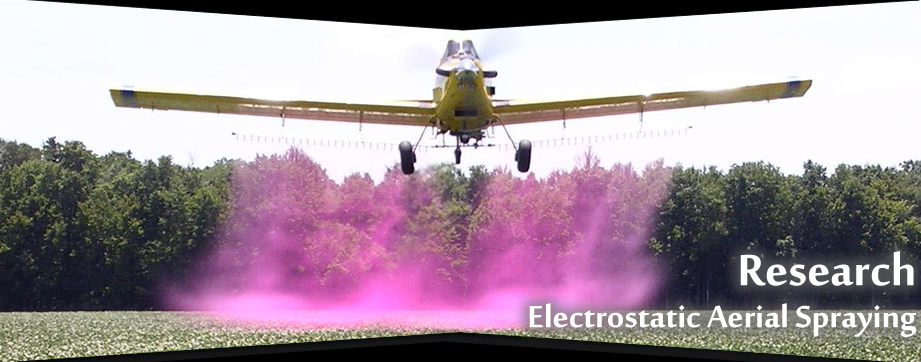ELECTROSTATIC AERIAL SPRAYING
By: ION I. INCULET, Fellow, IEEE, and JOSEF K. FISCHER
IEEE TRANSACTIONS ON INDUSTRY APPLICATIONS, VOL. 25, NO. 3, MAY/JUNE 1989
Paper IUSD 86-122, approved by the Electrostatic Processes Committee of the IEEE Industry Applications Society for presentation at the 1986 Industry Applications Society Annual Meeting, Denver, CO. September 28 – October 2. This work supported by CIBA-GEIGY Limited, Basle, Switzerland. Manuscript released for publication July 27, 1988.
I.I Inculet is with the Faculty of Engineering Science, Department of Electrical Engineering. The University of Western Ontario, Canada N6A 5B9.
J. K. Fischer is with the Agricultural Division, Applications Technology, Ciba-Geigy Limited, AG 8.12/R-1078.3.16, CH-4002, Basle, Switzerland. IEEE Log Number 8926537.
Abstract:
Electrostatic aerial spraying has been unsuccessfully attempted for the past two decades. The main stumbling block has been the elimination of the opposite polarity charge which develops on an aircraft when leaving behind an electrostatically charged spray.
A new method is presented for electrostatic aerial spraying and automatic control of the aircraft potential as well as some preliminary tests carried out with a full-scale aircraft. The method consists of inductively charging two coplanar clouds of opposite polarity and controlling any minor accidental charges on the electric system by means of corona discharges. By spraying a positively charged plane cloud on the starboard side of the same aircraft, with corona balancing controls one can maintain the potential of the aircraft within acceptable limits under all conditions. The two coplanar clouds sprayed from an altitude normally used in aerial applications will preferentially move towards the vegetation to be sprayed rather than be attracted to one another.
The new development is believed to be a substantial advance in aerial spraying technology.
CONCLUSIONS
- Aerial electrostatic spraying is feasible and can be performed safely with two oppositely charged coplanar clouds.
- Charging coarse spray electrostatically does not influence spray deposition significantly.
- Charging fine spray primarily enhances the impaction of the fine droplet trace on which shows up as a significant increase in droplet densities, whereas the recovered amount of the spray does not improve upon charging electrostatically at low flight levels.
- At higher flying altitudes, losses normally occurring due to evaporation and drift can be compensated by charging the spray electrostatically and hence increasing the deposition rates of the fine spray.
- Charging fine spray does improve the evenness of the spray distribution. (All coefficients of variation of charged sprays are smaller than the ones of undercharged spray).
Therefore, it may be concluded that electrostatically charging a spray does influence the spray deposition and that the effects become more pronounced with fine sprays. Thus we expect that charging will influence drift especially, but may also enhance deposition (recovery) under arid conditions.
REFERENCES:
- K. Gallwitz, "The electrostatic charging of plant protection materials," in La Physique des Forces Electrostatiques et Leurs Applications, Paris: Editions du Centre National de la Recherche Scientifique, 1961.
- J. B. Carlton, "Electrical capacitance determination and some implications for an electrostatic spray-charging aircraft." Trans. Am Soc. Agricult. Eng. , vol. 18, no. 4, pp. 641-644. 1975.
- D. H. Malcolm, "Method of electrostatically enhancing deposition of air borne spray materials." U.S. Patent 4 328 940, May 11, 1982.
- J. B. Carlton and L. F. Bouse, "Electrostatic spinner-nozzle for charging aerial sprays." Trans. Am. Soc. Agricult. Eng., vol. 23, no. 6, pp. 1369-1373, 1378. 1980.
- J. B. Carlton, "Techniques in electrostatic charging of sprays from aircraft," in Proc. 17th Ann. Agricultural Aviation Conf., Texas A & M Univ., College Station, TX. Feb. 1968.
- I. I. Inculet, "Aerial spraying apparatus," U.S. Patent 4 560 107, Dec. 24, 1985.
|

